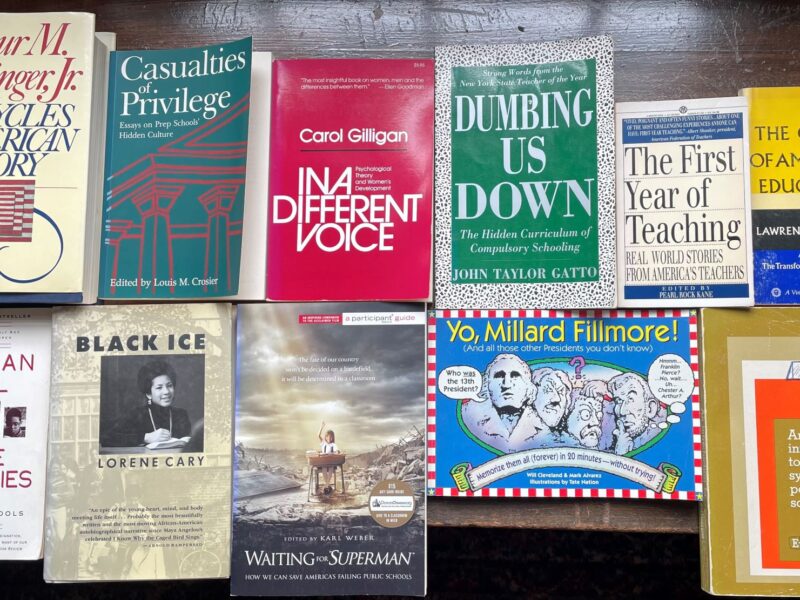Lately, I’ve found myself working with both students and teachers on writing. Having been out of the classroom saddle for a good long while, I’ve been poring through old notes and lesson plans. My exploration eventually led me to the excellent training I received over 40 years ago (Yikes!) as a rookie teacher at the Trinity-Pawling School (T-P) in Pawling, New York.
Fresh out of college, T-P hired me to tutor students in what was then called the Language Retraining Program, one of the first programs in the independent school world intentionally designed to support students with learning differences and disabilities. (Although the word isn’t used as much today, we talked a lot about dyslexia.) Stripping down to the basics, we spent a great deal of time on phonics, vowel vs. consonant sounds, grammar, and sentence structure. When in doubt, we tried to be as minimalist as possible and sought to eliminate any subterfuge that might inhibit or create a barrier to cognitive understanding.
Eventually, we had to teach our students how to write coherent paragraphs which then needed to be developed into comprehensible essays. One of my take-aways from that time period is The 5-Paragraph Equation. While it was a godsend to kids who were comfortable with math but were also downright frightened by all things verbal, I came to appreciate it as a useful tool for anyone seeking to tighten up his or her writing. Here’s the formula:
Paragraph 1: X = Y… Y = A, B, C.
Paragraph 2: X = A
Paragraph 3: X = B
Paragraph 4: X = C
Paragraph 5: X = A, B, C. Therefore, X = Y
To explain, let’s look at an example: Maine is a rural state. The following essay is offered in support of that point. So, let “Maine” be X and let “rural state” be Y.
Paragraph 1: X = Y… Y = A,B,C.
Maine is a rural state. A rural state is one with (A) a small and scattered population, (B) a shortage of major cities, and (C) a predominately agricultural economy. All three of these factors are applicable to the state of Maine.
Paragraph 2: X = A
Maine is home to a small and scattered population. Only recently did the state’s population cross the 1 million mark. Currently, its 1.3 million people place it as the 41st most populated state. It has been said that 90% of Maine’s people live in 10% of its area. Many towns in the northern regions do not even have names. They are actually numbered: e.g., Township #28, Township #29, etc.
Paragraph 3: X = B
Maine has no cities with over 75,000 people. Furthermore, there are only four communities (Portland, Lewiston, South Portland, and Westbrook) with over 25,000 residents. Maine’s largest city, Portland, has a population of 66,000. Saco, the state’s tenth largest, is slightly below 20,000. (Curious Hyde students might be interested to know that Bath’s population of 8,800 places it at #31 on Maine’s ranking of towns by population.)
Paragraph 4: X = C
Agriculture is arguably Maine’s primary economic focus. Maine’s potato plantations in Aroostook County are world famous. In addition to potatoes, Maine is known for its poultry production. Sustainable agriculture has also become a major focus in the state’s rural areas. Forestry, an aspect of agriculture, results in timber as a major state export.
Paragraph 5: X = A,B,C… Therefore, X = Y.
As the previous paragraphs have demonstrated, Maine has a small and scattered population, is characterized by a shortage of major cities, and has a predominately agricultural economy. Therefore, Maine is a rural state.
Simple stuff, but that’s what tends to work best in the classroom.
Onward, Malcolm Gauld


